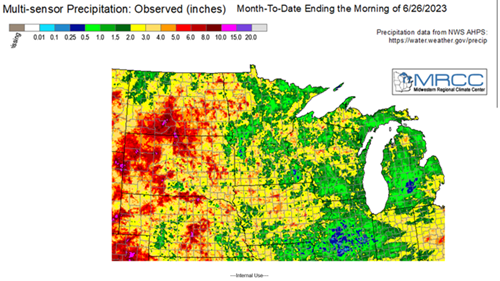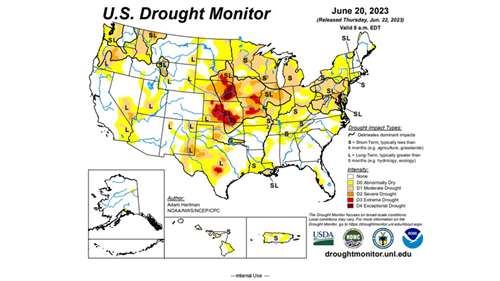Drought Monitor Update
BY Dairyland Seed Agronomy Team
Much needed rainfall this last week brought valuable stress and water relief to many growers. However, most hoped for a more generous moisture event that just did not deliver. As demonstrated in the rainfall totals to date for the month of June from the Midwest Regional Climate Center, variability has ruled the month over all the Dairyland Seed footprint.

The current drought monitor does not reflect some of the rain received over last week, but the most recent Drought Monitor indicates an abnormally dry environment for virtually all our Dairyland Seed geography. Additionally, a growing moderate drought rating (D1) in some small areas in northern Illinois and Indiana, as well as southeast South Dakota, deteriorating into severe drought (D2).

Perform your rain dance this week and we will see what we could hopefully be blessed with this week!

Brian Weller
Western Region
507.456.3034

Rod Moran
Western Region
507.456.3034

Dan Ritter
Central Region
219.863.0583

Branden Furseth
Northern Region
608.513.4265

Mark Gibson
Eastern Region
260.330.8968

Amanda Goffnett
Eastern Region
989.400.3793

Ryan Mueller
Eastern Region
989.400.3793
